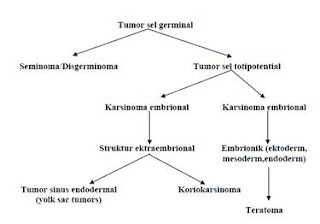Epidural hematoma is a type of intracranial bleeding most often occurs due to fracture of the skull. Olek cover the brain in the skull bones are rigid and hard. The brain is also surrounded by something that is useful as a wrapper which is called the dura. Its function is to protect the brain, blocking the venous sinuses, and form the periosteum tabula interna.
I. INTRODUCTION
Epidural hematoma is a type of intracranial bleeding most often occurs due to fracture of the skull. By cover the brain in the skull bones are rigid and hard. The brain is also surrounded by something that is useful as a wrapper which is called the dura. Its function is to protect the brain, blocking the venous sinuses, and form the periosteum tabula interna .. When one gets a great impact on the head is likely to form a hole, the movement of the brain may cause abrasion or laceration of blood vessels surrounding the brain and dura, when a blood vessel had torn the blood will accumulate in the space between the dura and the skull, the state inlah are often known as an epidural hematoma.
Epidural hematoma as a state of emergency and the neurologist who is usually associated with a linear fracture that decides the larger arteries, causing bleeding. Venous epidural hematoma associated with vein laceration and progress gradually. Arterial hematoma occurred in the middle meningeal artery that lies beneath the temporal bone. Bleeding into the epidural space, so if there is bleeding artery hematoma will quickly occur.
II. INCIDENCE AND EPIDEMIOLOGY
In the United States, 2% of cases of head trauma resulting in epidural hematoma and about 10% resulting in a coma. Internationally frequency of occurrence of epidural hematoma is similar to the incidence in the United States who are at risk of edh . are parents who have problems walking and frequent falls.
60% of patients with epidural hematoma is under the age of 20 years, and rarely occurs in less than 2 years of age and over 60 years. The increased mortality in patients aged less than 5 years and more than 55 years. Occurs more frequently in males than in females with a ratio of 4:1.
Types:
1. Acute epidural hematoma (58%) of arterial bleeding
2. Subacute hematoma (31%)
3. Cronic hematoma (11%) bleeding from vena
III. Etiology
Epidural hematomas can happen to anyone and any age, some circumstances that can lead to epidural hematoma is such a collision on the head on motorcycle accident. Epidural hematoma caused by head trauma, which is usually associated with fracture of the skull and laceration of blood vessels.
IV. ANATOMY OF THE BRAIN
The brain is protected from injury by the hair, skin and bones and wrap it, without this protection, the soft brain that makes us like it is, it would be easier to injury and damage. In addition, once a neuron is damaged, can not be repaired anymore. Head injuries can lead to big disaster for someone. Most of the problem is a direct result of head injuries. These effects should be avoided and immediately found from the medical team to avoid a series of events that lead to mental and physical disorders and even death.
Right at the top of the skull lies aponeurotika galea, a fibrous tissue, dense can move freely, which memebantu absorb the force of external trauma. In between the skin and galea there is a layer of fat and membrane layers in the vessel- large. If the tear is difficult to hold a vessel vasoconstriction and can cause significant blood loss in patients with lacerations on the scalp. Just below the galea are subaponeurotik space containing veins and diploika emisaria. These vessels can infection of the scalp until deep into the skull, which clearly shows how important cleansing and debridement of the scalp galea carefully when torn.
In adults, the skull is a tough room that is not possible intracranial extension. Bone actually consists of two walls or a tabula separated by a hollow bone. Outer wall in tabula externa, and the inner wall is called tabula interna. Structure and thus allows a force greater isolation, with a lighter weight. tabula interna contains grooves anterior meningeal artery, the media, and p0osterior. If the fracture of the skull caused tear one of these artery-artery, which in arterial bleeding, which accumulated in the epidural space, can fatal consequences unless it is found and treated promptly.
Other protective lining of the brain are the meninges. The third layer of the meninges is the dura mater, arachnoid, and pia mater:
1. Cranial dura mater, the outer layer is thick and strong. Consists of two layers:
- Endosteal layer (periosteal) formed by the outer periosteum wrapped in calvari
- The inner meningeal layer is a strong fibrous membrane that goes on in the foramen magnum with the spinal dura mater that surrounds the spinal cord
2. Arachnoidea mater cranial, intermediate layer that resembles a spider's web
3. Cranial pia mater, the innermost layer of which contains many fine blood vessels.
Figure 1. Anatomy of the head










